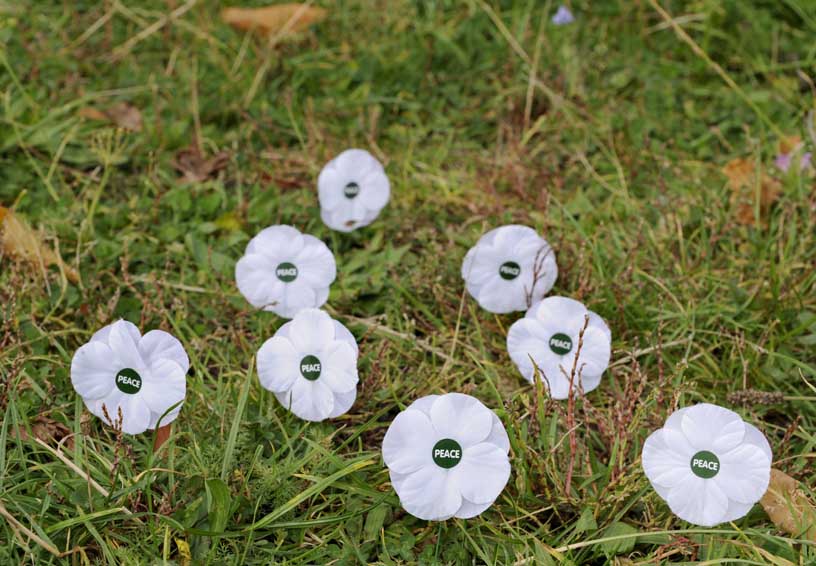Wearing white poppies for hope and remembrance
As Remembrance Sunday approaches, in a spirit of dignity and respect, Quakers will choose to wear a red or a white poppy. Some will wear both. Some choose neither.

The first red poppies were sold by the Royal British Legion in 1921 to support World War I veterans and to remember service men and women killed in conflict. In 1933, the white poppy was introduced by the Women's Cooperative Guild, to say very clearly, “No more wars. No more killing. Let us work for peace." The white poppy represents those on all sides who have died, been injured or still suffer in conflicts across the world.
Quakers have compassion for all those affected by war including injured and disabled military and civilians everywhere and their families.
This year, in Scotland, each parliamentarian has been given a white poppy for peace. Quakers and peace groups are inviting all MSPs, Scottish MPs and MEPs, to wear a white poppy to remember all the victims of war, military and civilian.
Elizabeth Allen, Convenor of Scottish Quaker Parliamentary Engagement Group, says, “By gifting a white poppy to each Scottish political representative, we are offering an alternative symbol of remembrance, which implies hope for a world where conflicts are resolved without violence and with justice."
This year, Quakers of General Meeting for Scotland – with Women's International League for Peace & Freedom and Edinburgh Justice and Peace Centre – have sent 194 white poppies to all 129 MSPs in the Scottish Parliament and 59 to all Scottish MPs in Westminster, as well as six to Scottish MEPs.
Today, the Peace Pledge Union makes and distributes white poppies. They can also be bought in person from Friends House in London, Edinburgh Quaker Meeting House and other Quaker venues around the country. They can be ordered by phoning 020 7663 1030 Monday to Friday 10.00am to 4.00pm.
The Quaker Centre in Friends House has sold nearly 6,000 white poppies this year.